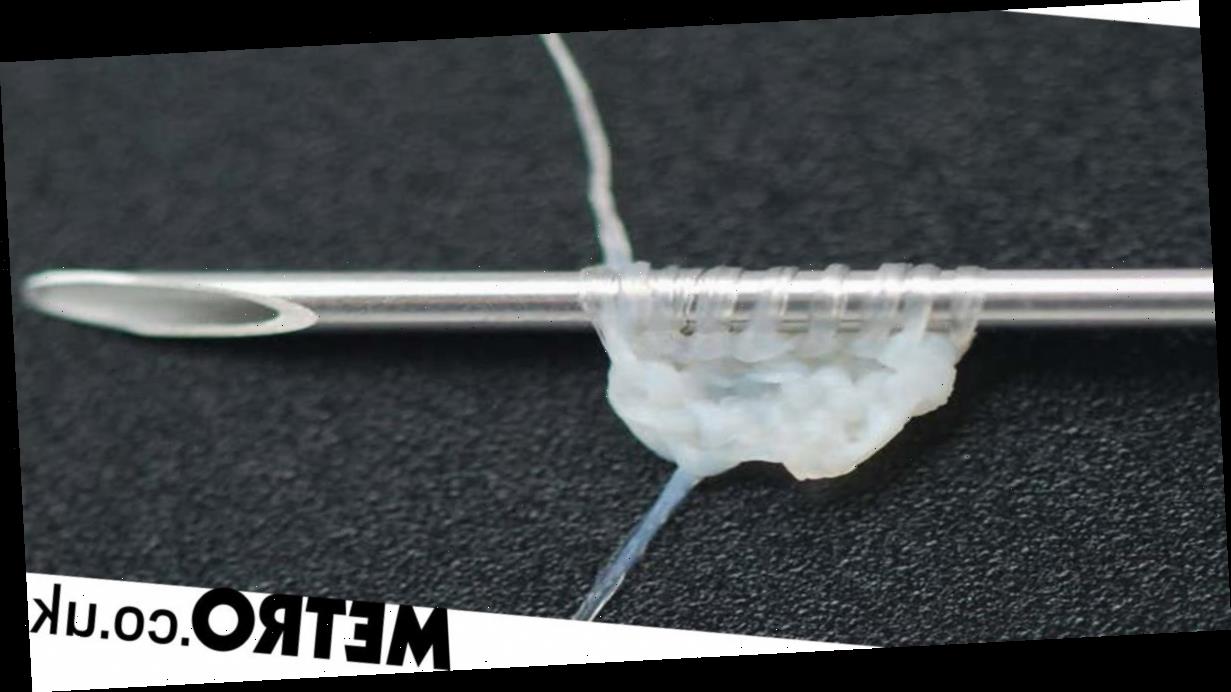A team of French scientists have created a form of ‘yarn’ woven from human skin cells.
They call it a ‘human textile’ and say it could be used in medical procedures to essentially stitch people back together with their own flesh.
The reason this could be a breakthrough development is that – sometimes – a tissue graft or other such procedure can trigger an immune response in some people. If surgeons were able to use a person’s own skin to sew them back up, there’s much less chance of a reaction.
‘These human textiles offer a unique level of biocompatibility and represent a new generation of completely biological tissue-engineered products,’ explained the team from the French National Institute of Health and Medical Research in Bordeaux.
It may sound a bit gruesome, but in order to create the thread the team cut sheets of human skin cells into long strips and literally wove them into a kind of yarn that’s flexible enough to be used in a variety of ways.
‘We can sew pouches, create tubes, valves and perforated membranes,’ lead researcher Nicholas L’Heureux told New Scientist. ‘With the yarn, any textile approach is feasible: knitting, braiding, weaving, even crocheting.’
At the moment, the yarn hasn’t been properly tested out on a human yet. The researchers say they used it to stitch a rat’s wounds together and watched how it healed up over two weeks.
It’s also been used to create a skin graft for a sheep’s artery that stopped it from leaking.
But the team believe that one day it will be possible to use this approach on a person.
‘By combining this truly “bio” material with a textile-based assembly, this original tissue engineering approach is highly versatile and can produce a variety of strong human textiles that can be readily integrated in the body,’ they said.
Transplants are still a very scary process for those going through them. Writing for Metro.co.uk last year, Sophie Washington explained the reality of an organ transplant is not what you think.
She wrote: ‘Transplants are life-saving but they are a treatment rather than a cure and transplanted organs do not last forever – mine lasted just three and a half years.
‘Without a functioning pancreas, there isn’t a day where I don’t experience multiple symptoms, be that seizures, spasms, numbness, falls, sickness, dizziness or fatigue.’
‘I am mostly dependent on my wheelchair as I am unable to walk any kind of distance and fall over frequently.
‘Even if a transplant is successful, there are still the regular hospital appointments, blood tests, biopsies and daily medications to consider, and the side effects of those medications. You can never miss a dose of those medications, and there is always a risk of organ rejection or infection.’
The full explanation on the ‘human textile’ development has been detailed in a paper published by the research team in the journal Acta Biomaterialia.
Source: Read Full Article

